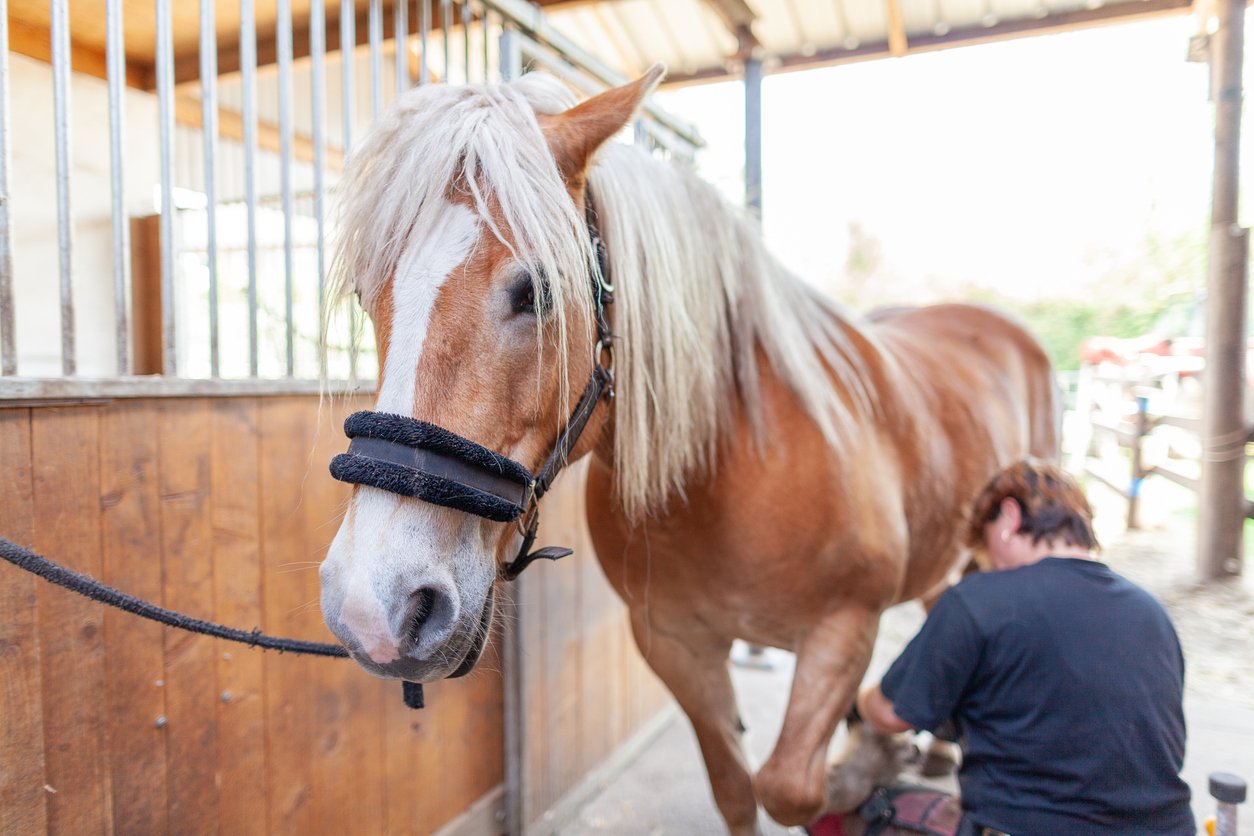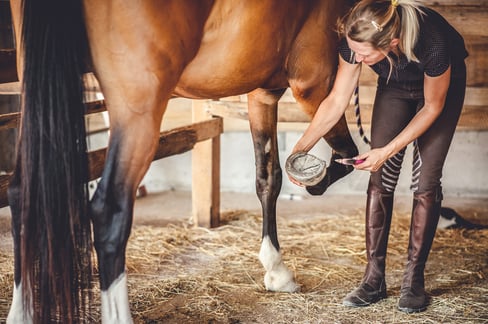Table of Contents
Entering the equine world as a newbie can feel a lot like landing on an alien planet where you don’t speak the native language. From what tack the horses need to how you take care of them, you’ve probably come across a few terms in your horse journey that leave you feeling more than a little confused.
For instance, the term farrier, or ferrier as it is sometimes spelled, is likely one of the first things you’ll hear about in your horse care journey. But what is a farrier for horses? Why are they important to our equines? And maybe, most importantly, how do you find a good one when you’re getting started? Well, fear not! We’re here to go in-depth with our guide on everything you need to know about working with a farrier and what role they play in your horse’s wellbeing.
Ready to saddle up? Let’s get into it!
What Is a Farrier for Horses?
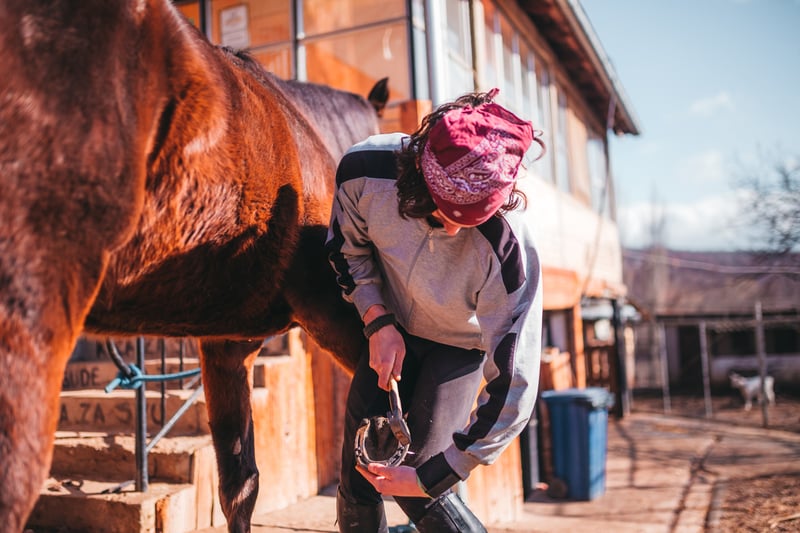
If you’re new to the horse world, you may have walked away from the barn asking yourself, “What on earth is a farrier for horses?” You’re in luck, though, because we’re here to break down the etymology of this word for you in some newbie-friendly terms.
A farrier is like a specialized blacksmith for horses. They're experts in making and fitting horseshoes and cleaning, trimming, and shaping a horse's hooves. Originally, the term included someone caring for a horse's overall health. The word "farrier" comes from the Anglo-French term, which meant a blacksmith for horses. It all goes back to the Latin word "ferrum," which means "iron," highlighting the connection to working with metal, especially for horseshoes.
Think of your horse farrier as a magical, all-knowing horseshoe expert who can help ensure your horse’s hooves are healthy and that your horse is as happy as can be in their shoes!
Horse Farrier Services and Tools
Now that we’re on the level about what this fancy-sounding word means, let's talk about some things that farriers do for horses like your own.
Commonly, you can break what a farrier does for a horse into three categories:
- Foot preparation
- Shoe fitting
- Post-shod care and maintenance
The table explains in depth how each of these farriery services works and what you can expect to see from your farrier appointment.
|
Horse Farrier Service |
What They Do |
|
Foot preparation |
|
|
Shoe fitting |
|
|
Post-shod care and maintenance |
|
As you can see, horse farriers are experts at getting your horse’s shod in the best possible way for their health and well-being and for top performance in sport horses. And what kind of expert would they be without the right tool kit for the job?
A horse farrier typically has tools in their kit including:
- Hoof tester
- Hoof nippers
- Horseshoe pullers
- Farrier’s rasp
- Farrier’s knife
- Anvil
- Farrier’s nailing hammer
- Nail clincher
- Hoof stand
- Hoof gauge
While some of these tools may look like medieval torture devices, they are in fact tools that help your horse avoid pain. And don’t worry if this sounds like an intimidating list. Your farrier can explain what they are doing as they work, especially if you are new to horse ownership and you won’t (and shouldn’t) do any hoof care yourself. Horses’ hooves are essential to their functioning, and the care of our equine pals’ feet should be taken very seriously and left to a professional.
The Importance of Farrier Shoeing a Horse
Have you ever had a badly fitting pair of shoes? They pinch, squeeze, blister, or rub against your feet and ankles, and then it feels like you’re walking on broken glass for a day or two afterward. Not cool!
Your horse would feel the same, and likely worse if their shoes and hooves were not well cared for. Horses’ hooves are at the center of their universe, and as the saying goes, “No foot, no horse!”
Here are some of the reasons why it’s so important to have your horse shod properly by a farrier:
- To maintain correct hoof balance and prevent a lame horse by preventing structures in their limbs from becoming overloaded
- To prevent a horse’s sole from getting injured (by sharp objects or rough terrain)
- To ensure proper conformation, particularly in an old horse or a very young horse
- For corrective or therapeutic reasons, such as in the treatment of laminitis in horses
Difference Between a Farrier and a Blacksmith
Have you ever been to a pioneer village or a living history museum? If you answered yes, you’ve perhaps seen the blazing fire, anvil, and striking of metal by a skilled craftsman demonstrating how metal was forged and shaped in days gone by. That craftsman is called a blacksmith, and since the dawn of the Iron Age, up until the Industrial Revolution, they played an essential role in everyday life across the world. They were the go-to folks for getting horseshoes, fixing up tools, farm gear, and even wagons and carriages.
Today, it’s unlikely you’ll get “blacksmith” on a career aptitude test, but the craft of working with and shaping metal by hand is still practiced by hobbyists and craftspeople who have a passion for handmade goods. This is also true of some kinds of horseshoes, though many are now made through mass production.
The table below shows some key aspects of each profession and how a horse farrier and a blacksmith differ.
|
Aspect |
Farrier |
Blacksmith |
|
Main Focus |
Specializes in horses, particularly hoof care and shoeing. |
Works with various metals, not limited to horses. |
|
Skills |
Expertise in shaping, fitting horseshoes, and hoof care. |
Crafts and shapes metal for a variety of purposes. |
|
Specific Work |
Prepares and treats horse hooves, fits, and nails shoes. |
Creates metal objects like tools, gates, and more. |
|
Tools Used |
Specialized tools for horseshoeing and hoof maintenance. |
General metalworking tools and equipment. |
Typical Schedule for Farrier Horse Shoeing
Now that you have a basic understanding of a farrier's job, you may wonder about the typical schedule for farrier horseshoeing and how often you should expect to see them. Most professionals agree that horses in today’s modern world should have a farrier visit every 4 to 6 weeks. You may hear 6 to 8 weeks thrown around as a fine interval, but that does not seem to support the best health outcomes for your horse.
If you’re looking for something that supports your horse's health, a joint supplement is a great place to start. Joint supplements like TRI-ACTA and TRI-ACTA H.A. Equine contain a synergistic blend of glucosamine, chondroitin, MSM, and in TRI-ACTA H.A. for Equine, hyaluronic acid. TRI-ACTA aids in reducing inflammation, supporting cartilage integrity, and improving overall joint flexibility in horses.
TRI-ACTA H.A. for Equine
Our maximum strength formula is perfect for horses that are ageing, experiencing arthritis and stiffness, are in training and competition, or under a heavy workload.
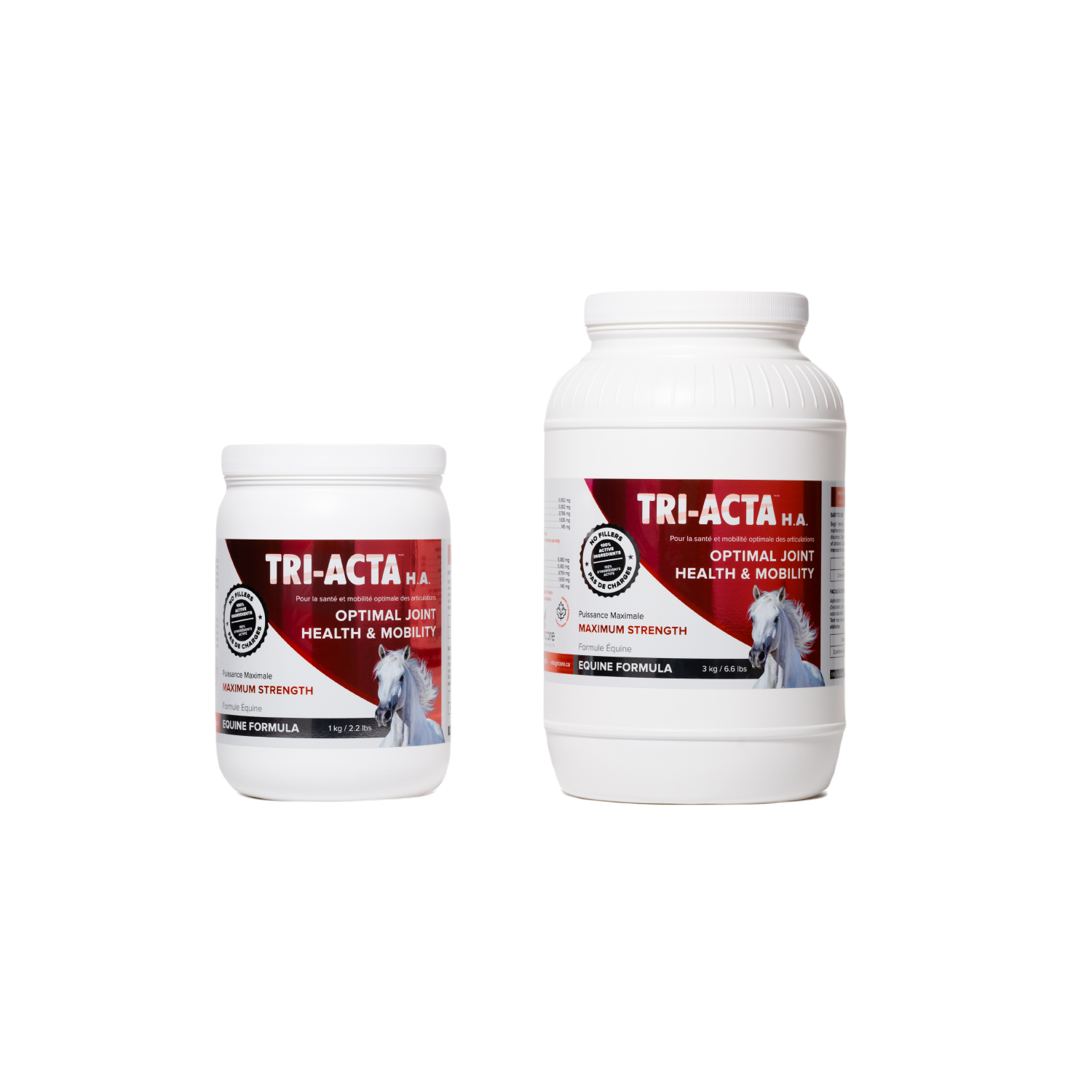
How often Should a Horse See a Farrier?
Ensuring your horse receives regular visits from a skilled farrier is crucial for maintaining their hoof health. Most horses benefit from a farrier appointment every 4 to 6 weeks. However, it's important to note that each horse is unique, and the ideal frequency may vary. Some horses require more frequent attention, while others could go longer between visits. A knowledgeable farrier will assess these factors and tailor their schedule to meet the specific needs of your equine companion, ensuring their hooves remain in optimal condition.
Things that impact how often your horse should see a farrier include:
- The growth rate of the hooves
- Current health of your horse's feet
- Your horse’s activity level (sport versus leisure horses may need more horse farrier care)
- Whether they have an existing condition affecting the hooves (such as laminitis)
Remember—if you’re unsure whether or not your horse should be shod more or less frequently (say that five times fast!), consult with your veterinarian or farrier.
Horse Farrier Prep
Like any appointment with an equine professional, you want to prepare yourself and your horse appropriately. This can include various methods, tools, and products and is also specific to you and your horse’s needs. Age, lifestyle, and health can also impact these preparations, so keep that in mind when reading the list below.
Here are a few horse farrier prep steps you can take before your next appointment:
- Train your horse from an early age to accept farrier work by focusing on imitating how a farrier will handle the horse. This should include touching their hooves, helping them practice standing “square”, and having their hoof in the stand.
- Burn off some steam and some bucking before your farrier appointment so your horse is less likely to buck or be restless during their appointment.
- Prepare yourself. You need to be a calming presence to your horse and also help the farrier do their job by paying attention to what they need you to do or how they need you to hold your horse.
- Gather up some calming aids in case your horse needs help during the appointment. Products like special calming pastes made with herbal components can help relax your special pal for the farrier.
With these steps in mind, you and your horse will be off to a hoof-stomping good time before you can say, “giddy up!”.
How to Find a Good Horse Farrier

Finding a reliable farrier is key to your horse's well-being. Start by seeking recommendations from fellow horse owners, trainers, or veterinarians in your community. Look for a farrier with experience and/or qualifications from a reputable school, good communication skills, and a patient demeanour, as these qualities contribute to a positive experience for both the horse and the owner.
Regular and attentive hoof care promotes soundness in your horse and fosters a trusting and cooperative relationship between the horse, owner, and farrier.
Consequences of a Poor Horse Farrier
As we mentioned briefly before, “no hoof, no horse”—but really, what is a horse without their hooves in tip-top shape?! Hooves are essential to mobility for horses. So if their hoof is in pain, your horse won’t be their usual trotting, carrot-eating self. Unfortunately, the wrong person offering horse farrier services can really harm your horse in both the short and long term with the wrong shoeing or care.
And we don’t mean to get all doom and gloom here – we just want to make clear how important good farrier care is. Most of the farriers around today are highly qualified, professional individuals who have had to job shadow or apprentice to learn their trade for several years.
That said, the key consequences of poor horse farrier care include:
- Hoof issues, including the deterioration of the hoof, uneven wear, imbalances, and misshapen or overgrown hooves.
- Horse lameness and overall discomfort
- Joint and muscle problems are caused by a chain reaction of stress that ultimately will lead to strain on certain parts of the horse that can end up causing long-term issues.
- Performance limitations or reduced performance if they are a sport horse
- Secondary health complications like infections and abscesses can affect overall horse health.
What to Look for in Farrier Services for Your Horse
Alright—it’s time to make a match. And no, we don’t mean finding a date for your cousin’s wedding. You need to find the best farrier for your horse. After all, our equines are practically family!
Here’s what to look for in farrier services for your horse:
- Experience and expertise
- Professional certifications or education
- Reputation and recommendations from other horse owners
- Good communication skills with you and your horse alike
- Patience and gentle handling with your horse
- Punctuality and reliability for appointments at a regular schedule
- A good understanding of your horse’s individual needs
- Knowledge of various breeds and kinds of horses (sport versus leisure)
- Uses modern tools and techniques
- Offers client education, such as how to care for your horse’s hooves in an emergency
Once you think you’ve made your one true love match, or should we say farrier-horse match, you should take time to see them in action, if at all possible, so you can be fully aware of how they do business and be sure of your choice.
Stabling Questions to Ask Regarding Farriers
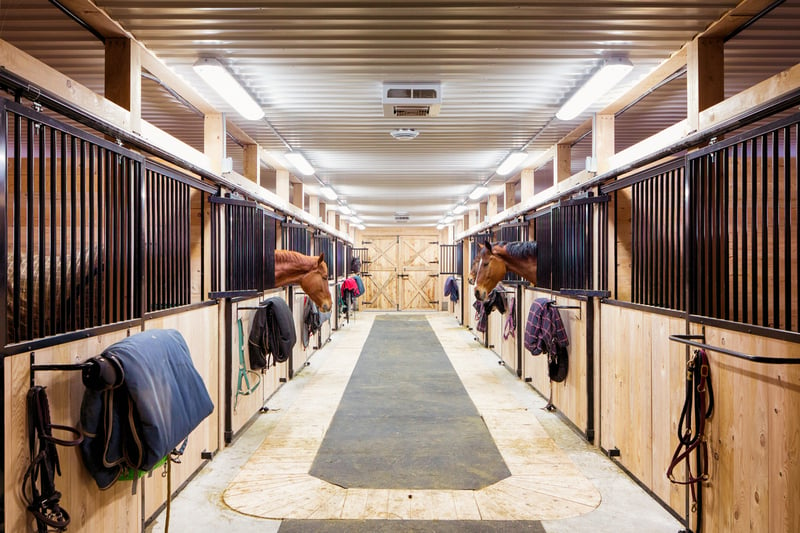
Considering that 47% of horses in Canada were boarded in 2022, it’s important to understand the relationship between you and your horse and the stable and the farrier. Otherwise, miscommunication can create frustration between you all, and the one who’ll end up suffering is your horse, of course!
So before you get into a working relationship with your farrier or your boarding stable, consider the following questions. Additionally, try to find out what other horse owners have to say about the services provided to get a clear picture of what you’re saddling yourself and your horse with. And remember, you know your horse's needs best. If you’re suspicious or uncertain of conditions at a boarding stable, don’t hesitate to move right along to the next option!
Who Do You Use as Your Farrier?
First and foremost—who the stable uses for their horse farrier services can make or break your choice to stabilize your equine pal at that particular barn.
Asking who the farrier is, how long they have been in business, and what credentials they have, among other questions about their background, can make your decision much easier. And, if everything works out well, it can also set your mind at ease to know that your horse is in excellent hoofs… er—hands.
What Is Your Farrier Schedule?
Some families pay an occasional sitter, while others have a live-in nanny. Similarly, some boarding stables have live-in farriers who can provide round-the-clock care to your horse, while others have a distinct but visiting farrier who comes in on a regular schedule.
Be sure to ask your stable what their farrier schedule is, and if you’re unsatisfied with the frequency, you may want to give it a second thought as an option for your pallion the stallion.
Can You Bring Your Own Horse Shoe Farrier?
Some barns' exclusivity with a live-in farrier may not require you to bring your own farrier, but it also may not allow you to bring your own into the barn for your horse. If this is a sticking point for you, and you must have more say over who your farrier is, then you’ll want to ensure you ask this question right away when considering a new stable.
How Much Does a Horse Farrier Cost?
In the equine world, we’re no strangers to costs! But we know it’s worth it for our horses' well-being and that it can often be an investment, albeit worthwhile. That’s why it’s important to answer the question: how much does it cost for a farrier to shoe a horse and see them on a regular cadence?
There are two ways to look at how much a horse farrier costs:
- Baked into boarding costs: You pay for the horse farrier services as part of your overall fee for the month of boarding at a stable.
- The average boarding costs are approximately $818 per month.
- Paying out of pocket: You pay for the cost of a farrier up front and out of pocket.
- The average cost of farrier care ranges from $617 per year for breeding stock up to $2,200 for elite sport horses.
Remember that these are ranges, and individual stables and farriers may have more or less costs than the averages listed above.
Supplementation for Best Mobility Outcomes: TRI-ACTA
Investing in top-notch horse health is just something we do for our equines. Whether that is finding the best farrier for your horse’s needs or simply focusing on the wellness routine that helps your pal be their best self, we know it’s an important part of your relationship with your horse.
That’s why we recommend TRI-ACTA for Equine, a powerful lineup of supplements designed to help your horse feel and move at their best. TRI-ACTA offers easy-to-feed daily doses with a high therapeutic value in a small serving with only the highest quality active ingredients.
What are those active ingredients, and how do they help boost your horse’s mobility? Check out the table below for a breakdown of these ingredients.
|
Ingredient |
How it Benefits Horse Mobility |
|
Glucosamine |
Promotes joint health by supporting cartilage formation |
|
Hyaluronic Acid |
Lubricates joints for improved flexibility and ease of movement |
|
Chondroitin |
Maintains the structural integrity of cartilage, contributing to joint resilience |
|
MSM |
Reduces inflammation, enhancing overall mobility |
TRI-ACTA for Equine is the perfect solution for younger, more mobile horses. It contains everything a horse needs for preventative maintenance in a simple daily dose. If your horse is a senior or has a few battle scars from joint injuries over the years, TRI-ACTA H.A. for Equine includes hyaluronic acid to help them move more easily. Either way, you’re choosing a supplement that will make a real difference for your horse now and in the future.
TRI-ACTA for Equine
Providing preventative support for younger horses and helping mitigate the early onset of joint degeneration and other mobility issues.
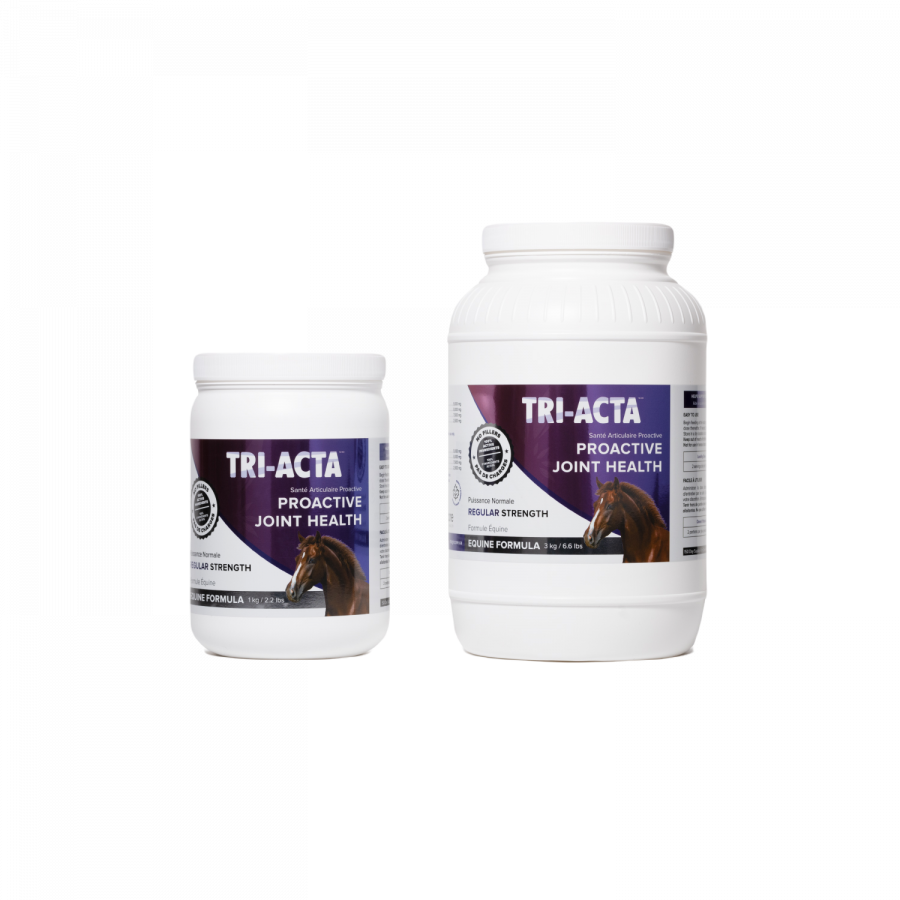
Getting Farrier Care Right
As you embark on the journey of caring for your equine companion, remember that a happy, healthy horse is a culmination of thoughtful care from hoof to tail. Finding a skilled farrier is crucial, ensuring your horse's hooves are in expert hands.
And let's not forget the importance of holistic health—consider integrating an equine supplement like TRI-ACTA for Equine to support your horse's overall well-being. With a blend of joint-nourishing ingredients, it complements the expert care provided by your farrier. Here's to happy hooves, healthy joints, and your lifelong bond with your equine pal!
Newsletter Signup
Subscribe to our newsletter to receive the latest news and exclusive offers.
.jpg?height=2000&name=Cliick_Integricare-DISPLAY-REVISEDV2%20(1).jpg)
Proactive & Therapeutic Joint Supplements
When given daily, Integricare joint supplements recover bone and joint injuries faster and help prevent mobility injuries from happening in the first place.

